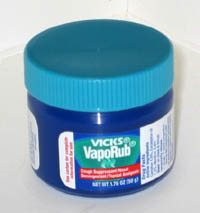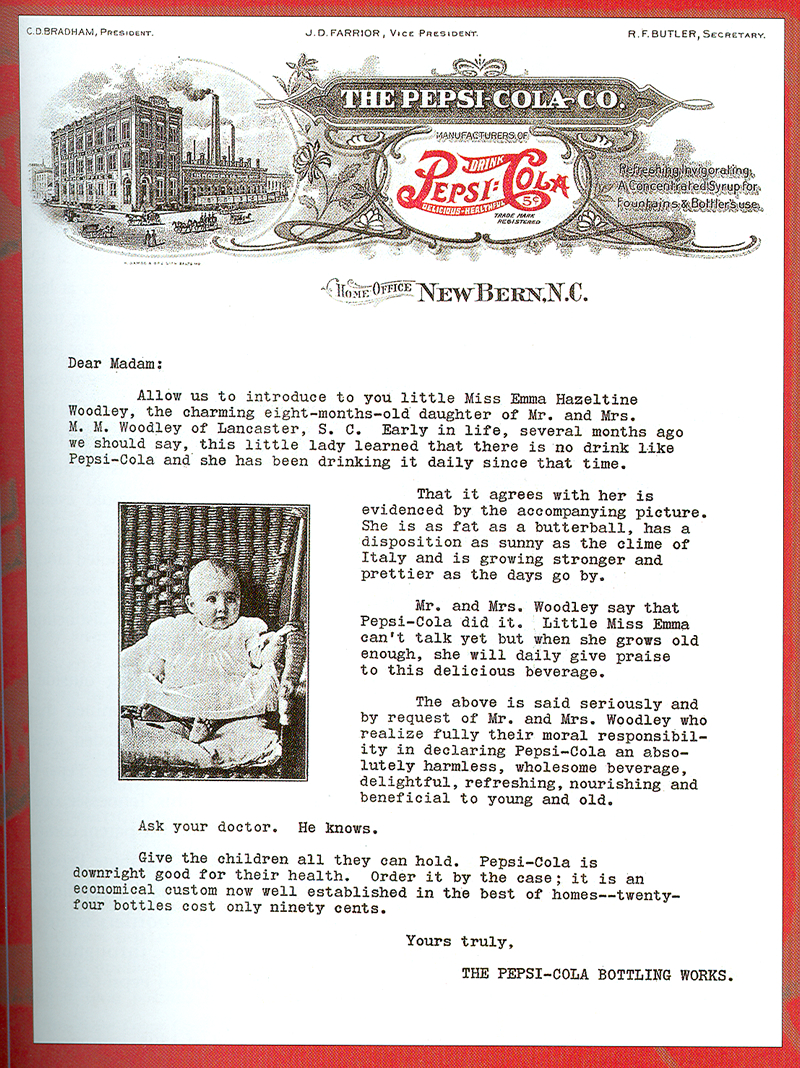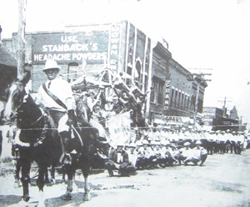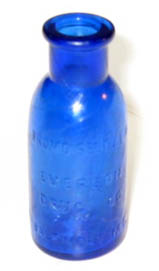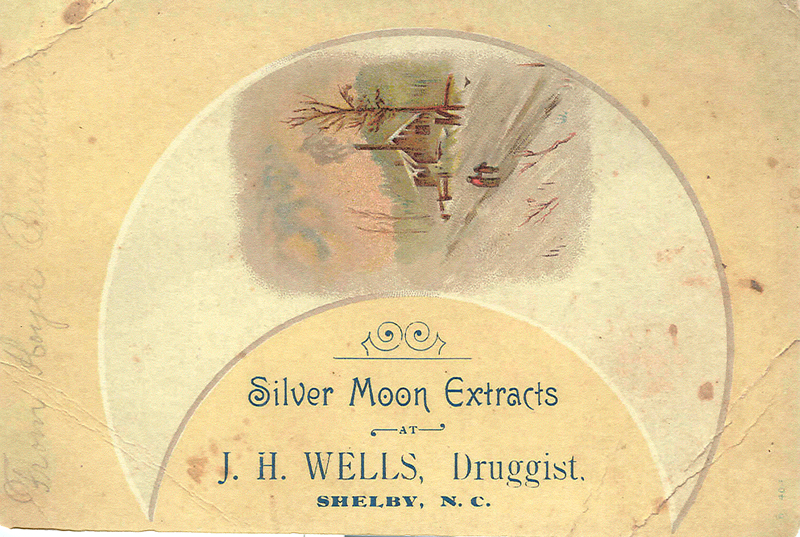 |
"Patent medicine"
Patent medicine generally categorizes the assorted tonics, pills, ointments, powders, and other compounds that in the 1800s and early 1900s were widely sold. Although many of the names and label designs of these dubious mixtures were trademarked, very few of the "medicines" were ever officially patented by the federal government and had their ingredients and their alleged health benefits recorded in Washington, D.C.
⇐ Trade card for J. H. Wells, Druggist, ca. 1900.
|
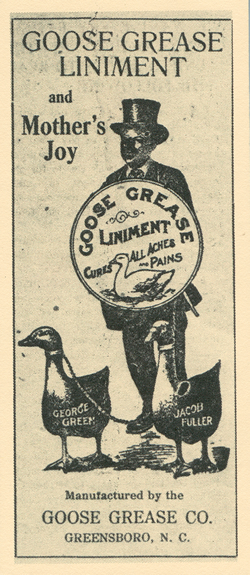 |
⇐ Advertisement for Goose Grease Liniment, undated. |
 |
Log cabin pharmacy, 1910
Introducing modern medicines to the backwoods of North Carolina and coaxing residents away from their homemade remedies were no easy tasks, especially for a woman in the early 1900s. Shown here is one of the first pharmacies in Henderson County. Located between Edneyville and Bat Cave, it was operated by Dorothy Sharpe, who is standing at the right in the photograph.
⇐ Photo from the North Carolina Collection Photo Archives.
|
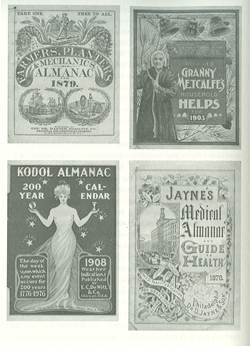 |
Turpentine, Kerosene, & Vinegar
"Folk medicine," like patent medicine, should not be dismissed or categorized entirely as quackery, although there were many outlandish treatments that mountain folk used to combat diseases and relieve their aches and pains. Turpentine, kerosene, and vinegar served often as bases in homemade liniments and tonics. Among the many remedies documented in this book is one for headaches:
[B]elieving that a headache was caused by an excessive flow of blood to the head, some residents tied a rag or bandanna (some believed it must be red) tightly around the head to curtail blood flow. More often than not, the rag was soaked in turpentine, camphor, or vinegar.
⇐ Anthony Cavendar, Folk Medicine in Southern Appalachia (Chapel Hill: UNC Press, 2003).
|
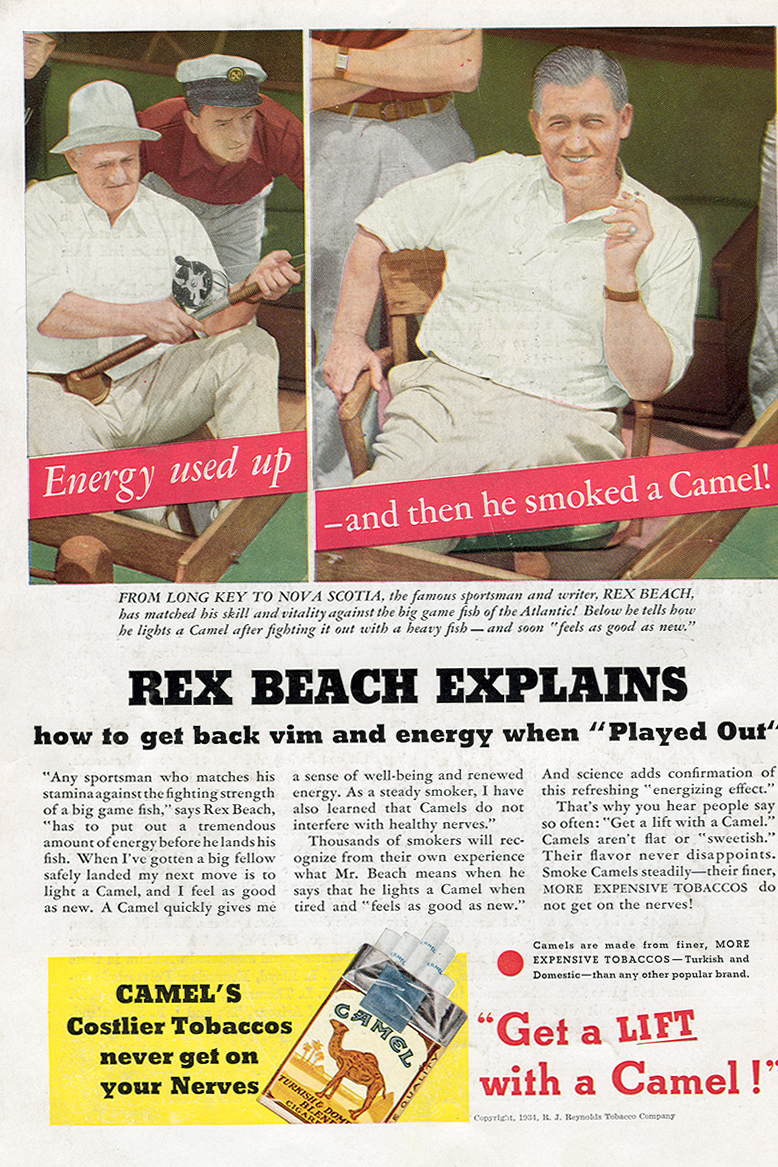 |
The "curing powers" of tobacco
While various cancers, emphysema, and other deadly illnesses are well documented and firmly linked to tobacco, for over four centuries smoking and chewing the "weed" were widely regarded and promoted as beneficial to one's health. In the 1500s, Spanish and English doctors routinely prescribed the smoking of tobago (a Native American term) for patients who suffered respiratory problems, serving as an aid to "expunge" congested lungs. In the 1934 advertisement (at left) smoking is touted as a provider of "well being" and reliable dispenser of "vim and energy." "I have also learned," professes writer Rex Beach in this testimonial, "that Camels do not interfere with healthy nerves."
⇐ The Alumni Review, University of North Carolina at Chapel Hill, volume 23, number 1 (October 1934).
|





